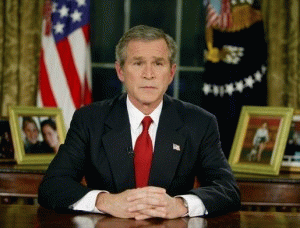The same journalistic failures have appeared in similar articles about Facebook and Twitter, which like Google didn't detect any Russian operation until put under intense pressure by influential members of Congress and then "found" a tiny number of "Russia-linked" accounts.
At Facebook, after two searches found nothing -- and after a personal visit from Sen. Mark Warner, D-Virginia, vice chairman of the Senate Intelligence Committee and a key legislator on the high-tech industry -- the social media company turned up $100,000 in "Russia-linked" ads spread out over three years (compared to its annual revenue of $27 billion). Facebook also reported that only 44 percent of the ads appeared before the 2016 election.
Facing similar pressures from key members of Congress, Twitter identified 201 "Russia-linked" accounts (out of Twitter's 328 million monthly users).
Tiny Pebbles
However, rather than include the comparative numbers which would show how nutty Russia-gate has become, the U.S. mainstream media systematically avoids any reference to how tiny the "Russia-linked" pebbles are when compared to the size of the very large lake into which they were allegedly tossed.
The mainstream Russia-gate narrative also keeps running up against other inconveniently contrary facts that then have to be explained away by the "responsible media." For instance, The New York Times discovered that one of the "Russia-linked" Facebook groups was devoted to photos of "adorable puppies." That left the "newspaper of record" musing about how nefarious the Russians must be to cloak their sinister operations behind puppies. [See Consortiumnews.com's "The Mystery of the Russia-gate Puppies."]

President George W. Bush announcing the start of his invasion of Iraq on March 19, 2003.
(Image by White House Photo) Details DMCA
The alternative explanation, of course, is unthinkable at least within the confines of "acceptable thought"; the alternative being that there might be no sinister Kremlin campaign to poison American politics or to install Trump in the White House, that what we are witnessing is a mainstream stampede similar to what preceded the Iraq War in 2003.
In the run-up to that disastrous invasion, every tidbit of suspicion about Saddam Hussein hiding WMD was trumpeted loudly across the front pages of The New York Times, The Washington Post and other major U.S. news outlets. The handful of dissenters who questioned the groupthink were ignored or dismissed as "Saddam apologists"; most were essentially banned from the public square.
Another similarity is that in both cases the U.S. government was injecting large sums of money that helped finance the pro-war propaganda. In the Iraq case, Congress funded the Iraqi National Congress, which helped generate false WMD claims that were then accepted credulously by the U.S. mainstream media.
In the Russia-gate case, Congress has authorized tens of millions of dollars to combat alleged Russian "propaganda and disinformation," a sum that is creating a feeding frenzy among "scholars" and other "experts" to produce reports that support the anti-Russia narrative. [See Consortiumnews.com's "The Slimy Business of Russia-gate."]
Of course, the big difference between Iraq in 2003 and Russia in 2017 is that as catastrophic as the Iraq invasion was, it pales against the potential for thermo-nuclear war that could lie at the end of this latest hysteria.
(Note: You can view every article as one long page if you sign up as an Advocate Member, or higher).





